Video Representation Fusion Network For Multi-Label Movie Genre Classification
Tianyu Bi,
Dmitri Jarnikov,
Johan Lukkien

Auto-TLDR; A Video Representation Fusion Network for Movie Genre Classification
Similar papers
RWF-2000: An Open Large Scale Video Database for Violence Detection
Ming Cheng, Kunjing Cai, Ming Li

Auto-TLDR; Flow Gated Network for Violence Detection in Surveillance Cameras
Abstract Slides Poster Similar
Pose-Based Body Language Recognition for Emotion and Psychiatric Symptom Interpretation
Zhengyuan Yang, Amanda Kay, Yuncheng Li, Wendi Cross, Jiebo Luo

Auto-TLDR; Body Language Based Emotion Recognition for Psychiatric Symptoms Prediction
Abstract Slides Poster Similar
TinyVIRAT: Low-Resolution Video Action Recognition
Ugur Demir, Yogesh Rawat, Mubarak Shah

Auto-TLDR; TinyVIRAT: A Progressive Generative Approach for Action Recognition in Videos
Abstract Slides Poster Similar
Late Fusion of Bayesian and Convolutional Models for Action Recognition
Camille Maurice, Francisco Madrigal, Frederic Lerasle

Auto-TLDR; Fusion of Deep Neural Network and Bayesian-based Approach for Temporal Action Recognition
Abstract Slides Poster Similar
Not 3D Re-ID: Simple Single Stream 2D Convolution for Robust Video Re-Identification

Auto-TLDR; ResNet50-IBN for Video-based Person Re-Identification using Single Stream 2D Convolution Network
Abstract Slides Poster Similar
AttendAffectNet: Self-Attention Based Networks for Predicting Affective Responses from Movies
Thi Phuong Thao Ha, Bt Balamurali, Herremans Dorien, Roig Gemma

Auto-TLDR; AttendAffectNet: A Self-Attention Based Network for Emotion Prediction from Movies
Abstract Slides Poster Similar
Gabriella: An Online System for Real-Time Activity Detection in Untrimmed Security Videos
Mamshad Nayeem Rizve, Ugur Demir, Praveen Praveen Tirupattur, Aayush Jung Rana, Kevin Duarte, Ishan Rajendrakumar Dave, Yogesh Rawat, Mubarak Shah

Auto-TLDR; Gabriella: A Real-Time Online System for Activity Detection in Surveillance Videos
Learnable Higher-Order Representation for Action Recognition

Auto-TLDR; Learningable Higher-Order Operations for Spatiotemporal Dynamics in Video Recognition
Feature Pyramid Hierarchies for Multi-Scale Temporal Action Detection

Auto-TLDR; Temporal Action Detection using Pyramid Hierarchies and Multi-scale Feature Maps
Abstract Slides Poster Similar
Vision-Based Multi-Modal Framework for Action Recognition
Djamila Romaissa Beddiar, Mourad Oussalah, Brahim Nini

Auto-TLDR; Multi-modal Framework for Human Activity Recognition Using RGB, Depth and Skeleton Data
Abstract Slides Poster Similar
You Ought to Look Around: Precise, Large Span Action Detection
Ge Pan, Zhang Han, Fan Yu, Yonghong Song, Yuanlin Zhang, Han Yuan

Auto-TLDR; YOLA: Local Feature Extraction for Action Localization with Variable receptive field
More Correlations Better Performance: Fully Associative Networks for Multi-Label Image Classification

Auto-TLDR; Fully Associative Network for Fully Exploiting Correlation Information in Multi-Label Classification
Abstract Slides Poster Similar
MFI: Multi-Range Feature Interchange for Video Action Recognition
Sikai Bai, Qi Wang, Xuelong Li

Auto-TLDR; Multi-range Feature Interchange Network for Action Recognition in Videos
Abstract Slides Poster Similar
Enriching Video Captions with Contextual Text
Philipp Rimle, Pelin Dogan, Markus Gross
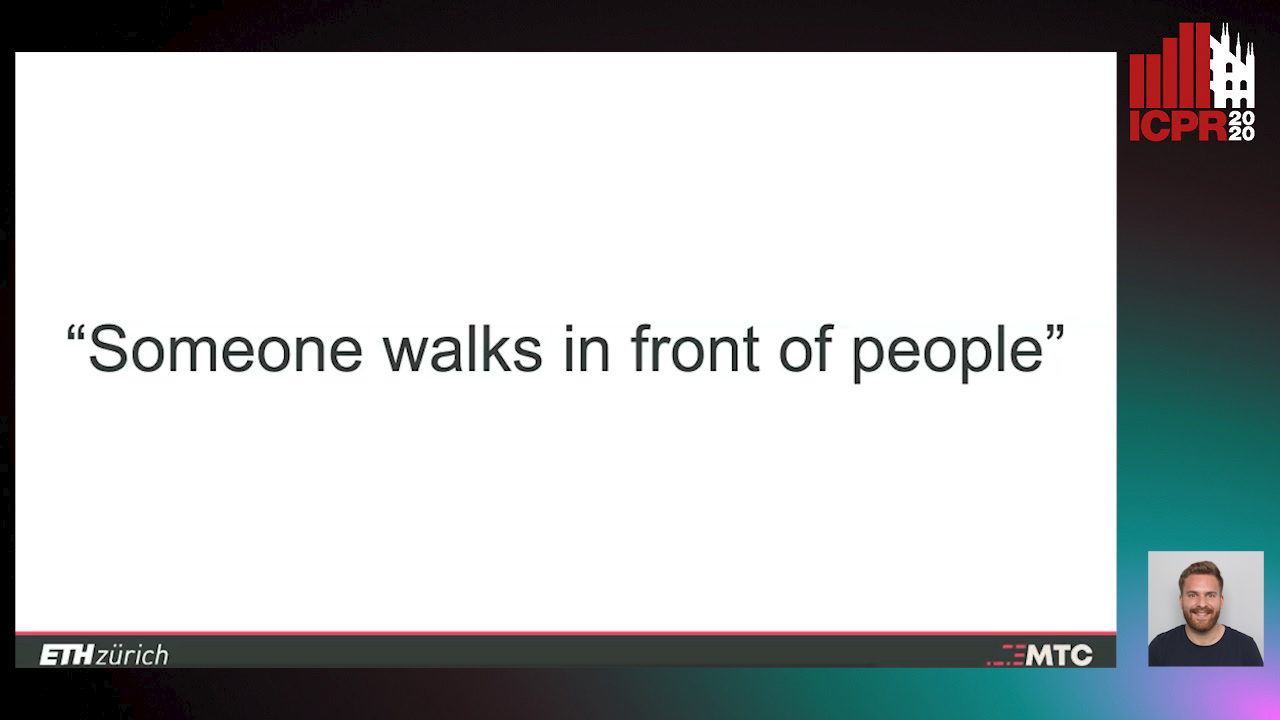
Auto-TLDR; Contextualized Video Captioning Using Contextual Text
Abstract Slides Poster Similar
RMS-Net: Regression and Masking for Soccer Event Spotting
Matteo Tomei, Lorenzo Baraldi, Simone Calderara, Simone Bronzin, Rita Cucchiara

Auto-TLDR; An Action Spotting Network for Soccer Videos
Abstract Slides Poster Similar
MixTConv: Mixed Temporal Convolutional Kernels for Efficient Action Recognition
Kaiyu Shan, Yongtao Wang, Zhi Tang, Ying Chen, Yangyan Li

Auto-TLDR; Mixed Temporal Convolution for Action Recognition
Abstract Slides Poster Similar
What and How? Jointly Forecasting Human Action and Pose
Yanjun Zhu, Yanxia Zhang, Qiong Liu, Andreas Girgensohn

Auto-TLDR; Forecasting Human Actions and Motion Trajectories with Joint Action Classification and Pose Regression
Abstract Slides Poster Similar
Video Summarization with a Dual Attention Capsule Network
Hao Fu, Hongxing Wang, Jianyu Yang
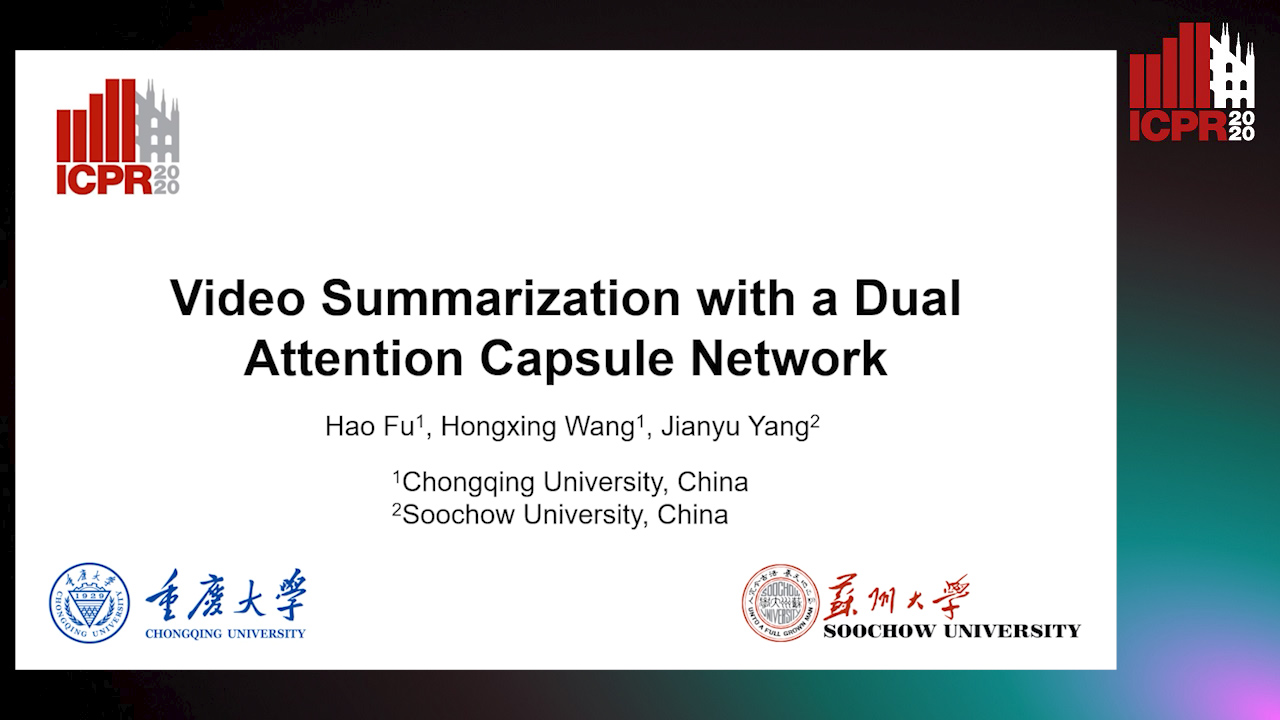
Auto-TLDR; Dual Self-Attention Capsule Network for Video Summarization
Abstract Slides Poster Similar
Single View Learning in Action Recognition
Gaurvi Goyal, Nicoletta Noceti, Francesca Odone

Auto-TLDR; Cross-View Action Recognition Using Domain Adaptation for Knowledge Transfer
Abstract Slides Poster Similar
Extracting Action Hierarchies from Action Labels and their Use in Deep Action Recognition
Konstadinos Bacharidis, Antonis Argyros

Auto-TLDR; Exploiting the Information Content of Language Label Associations for Human Action Recognition
Abstract Slides Poster Similar
Temporally Coherent Embeddings for Self-Supervised Video Representation Learning
Joshua Knights, Ben Harwood, Daniel Ward, Anthony Vanderkop, Olivia Mackenzie-Ross, Peyman Moghadam

Auto-TLDR; Temporally Coherent Embeddings for Self-supervised Video Representation Learning
Abstract Slides Poster Similar
ActionSpotter: Deep Reinforcement Learning Framework for Temporal Action Spotting in Videos
Guillaume Vaudaux-Ruth, Adrien Chan-Hon-Tong, Catherine Achard

Auto-TLDR; ActionSpotter: A Reinforcement Learning Algorithm for Action Spotting in Video
Abstract Slides Poster Similar
A Grid-Based Representation for Human Action Recognition
Soufiane Lamghari, Guillaume-Alexandre Bilodeau, Nicolas Saunier

Auto-TLDR; GRAR: Grid-based Representation for Action Recognition in Videos
Abstract Slides Poster Similar
Image Sequence Based Cyclist Action Recognition Using Multi-Stream 3D Convolution
Stefan Zernetsch, Steven Schreck, Viktor Kress, Konrad Doll, Bernhard Sick
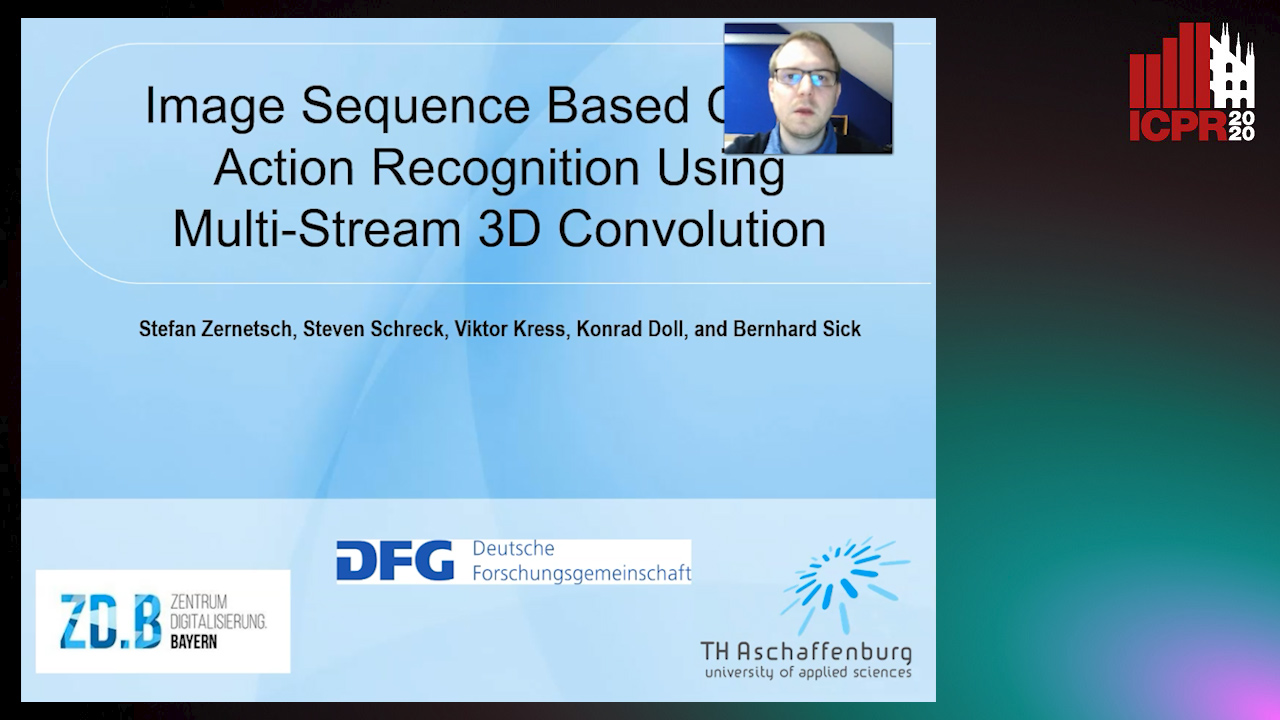
Auto-TLDR; 3D-ConvNet: A Multi-stream 3D Convolutional Neural Network for Detecting Cyclists in Real World Traffic Situations
Abstract Slides Poster Similar
Precise Temporal Action Localization with Quantified Temporal Structure of Actions
Chongkai Lu, Ruimin Li, Hong Fu, Bin Fu, Yihao Wang, Wai Lun Lo, Zheru Chi

Auto-TLDR; Action progression networks for temporal action detection
Abstract Slides Poster Similar
Developing Motion Code Embedding for Action Recognition in Videos
Maxat Alibayev, David Andrea Paulius, Yu Sun

Auto-TLDR; Motion Embedding via Motion Codes for Action Recognition
Abstract Slides Poster Similar
Space-Time Domain Tensor Neural Networks: An Application on Human Pose Classification
Konstantinos Makantasis, Athanasios Voulodimos, Anastasios Doulamis, Nikolaos Doulamis, Nikolaos Bakalos

Auto-TLDR; Tensor-Based Neural Network for Spatiotemporal Pose Classifiaction using Three-Dimensional Skeleton Data
Abstract Slides Poster Similar
Modeling Long-Term Interactions to Enhance Action Recognition
Alejandro Cartas, Petia Radeva, Mariella Dimiccoli

Auto-TLDR; A Hierarchical Long Short-Term Memory Network for Action Recognition in Egocentric Videos
Abstract Slides Poster Similar
SCA Net: Sparse Channel Attention Module for Action Recognition
Hang Song, Yonghong Song, Yuanlin Zhang
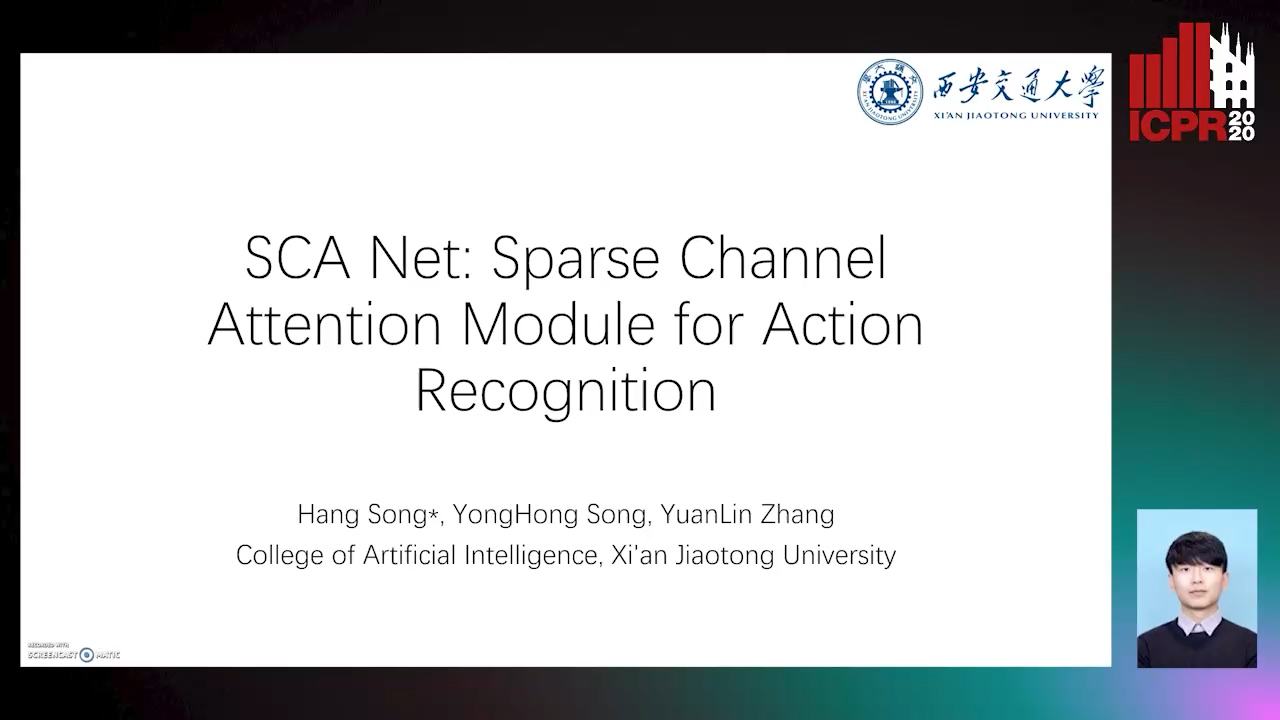
Auto-TLDR; SCA Net: Efficient Group Convolution for Sparse Channel Attention
Abstract Slides Poster Similar
Audio-Video Detection of the Active Speaker in Meetings
Francisco Madrigal, Frederic Lerasle, Lionel Pibre, Isabelle Ferrané

Auto-TLDR; Active Speaker Detection with Visual and Contextual Information from Meeting Context
Abstract Slides Poster Similar
Attention-Based Deep Metric Learning for Near-Duplicate Video Retrieval
Kuan-Hsun Wang, Chia Chun Cheng, Yi-Ling Chen, Yale Song, Shang-Hong Lai

Auto-TLDR; Attention-based Deep Metric Learning for Near-duplicate Video Retrieval
Self-Supervised Joint Encoding of Motion and Appearance for First Person Action Recognition
Mirco Planamente, Andrea Bottino, Barbara Caputo

Auto-TLDR; A Single Stream Architecture for Egocentric Action Recognition from the First-Person Point of View
Abstract Slides Poster Similar
Motion Complementary Network for Efficient Action Recognition
Ke Cheng, Yifan Zhang, Chenghua Li, Jian Cheng, Hanqing Lu

Auto-TLDR; Efficient Motion Complementary Network for Action Recognition
Abstract Slides Poster Similar
Context Visual Information-Based Deliberation Network for Video Captioning
Min Lu, Xueyong Li, Caihua Liu

Auto-TLDR; Context visual information-based deliberation network for video captioning
Abstract Slides Poster Similar
3D Attention Mechanism for Fine-Grained Classification of Table Tennis Strokes Using a Twin Spatio-Temporal Convolutional Neural Networks
Pierre-Etienne Martin, Jenny Benois-Pineau, Renaud Péteri, Julien Morlier
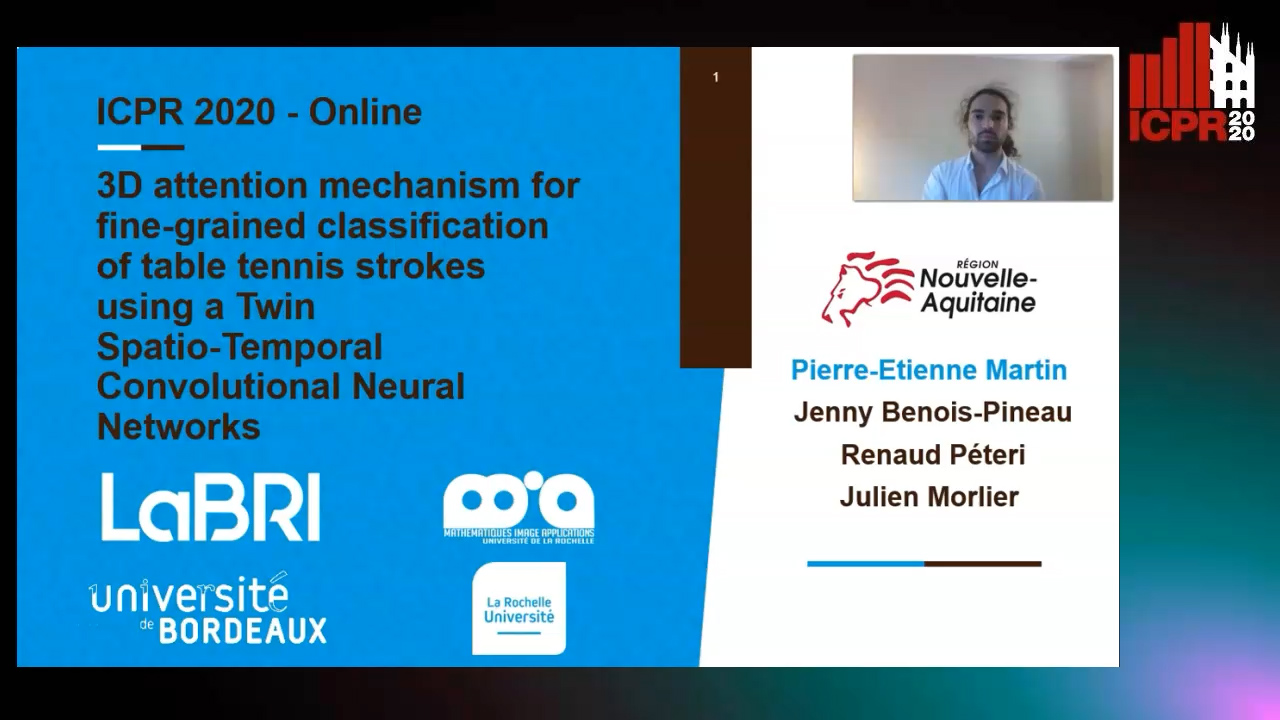
Auto-TLDR; Attentional Blocks for Action Recognition in Table Tennis Strokes
Abstract Slides Poster Similar
Applying (3+2+1)D Residual Neural Network with Frame Selection for Hong Kong Sign Language Recognition
Zhenxing Zhou, King-Shan Lui, Vincent W.L. Tam, Edmund Y. Lam

Auto-TLDR; Hong Kong Sign Language Recognition with 3D Residual Neural Network and Resilience Model
Abstract Slides Poster Similar
SAT-Net: Self-Attention and Temporal Fusion for Facial Action Unit Detection
Zhihua Li, Zheng Zhang, Lijun Yin

Auto-TLDR; Temporal Fusion and Self-Attention Network for Facial Action Unit Detection
Abstract Slides Poster Similar
Attention-Driven Body Pose Encoding for Human Activity Recognition
Bappaditya Debnath, Swagat Kumar, Marry O'Brien, Ardhendu Behera

Auto-TLDR; Attention-based Body Pose Encoding for Human Activity Recognition
Abstract Slides Poster Similar
Audio-Based Near-Duplicate Video Retrieval with Audio Similarity Learning
Pavlos Avgoustinakis, Giorgos Kordopatis-Zilos, Symeon Papadopoulos, Andreas L. Symeonidis, Ioannis Kompatsiaris

Auto-TLDR; AuSiL: Audio Similarity Learning for Near-duplicate Video Retrieval
Abstract Slides Poster Similar
Multi-Attribute Learning with Highly Imbalanced Data
Lady Viviana Beltran Beltran, Mickaël Coustaty, Nicholas Journet, Juan C. Caicedo, Antoine Doucet

Auto-TLDR; Data Imbalance in Multi-Attribute Deep Learning Models: Adaptation to face each one of the problems derived from imbalance
Abstract Slides Poster Similar
Depth Videos for the Classification of Micro-Expressions
Ankith Jain Rakesh Kumar, Bir Bhanu, Christopher Casey, Sierra Cheung, Aaron Seitz
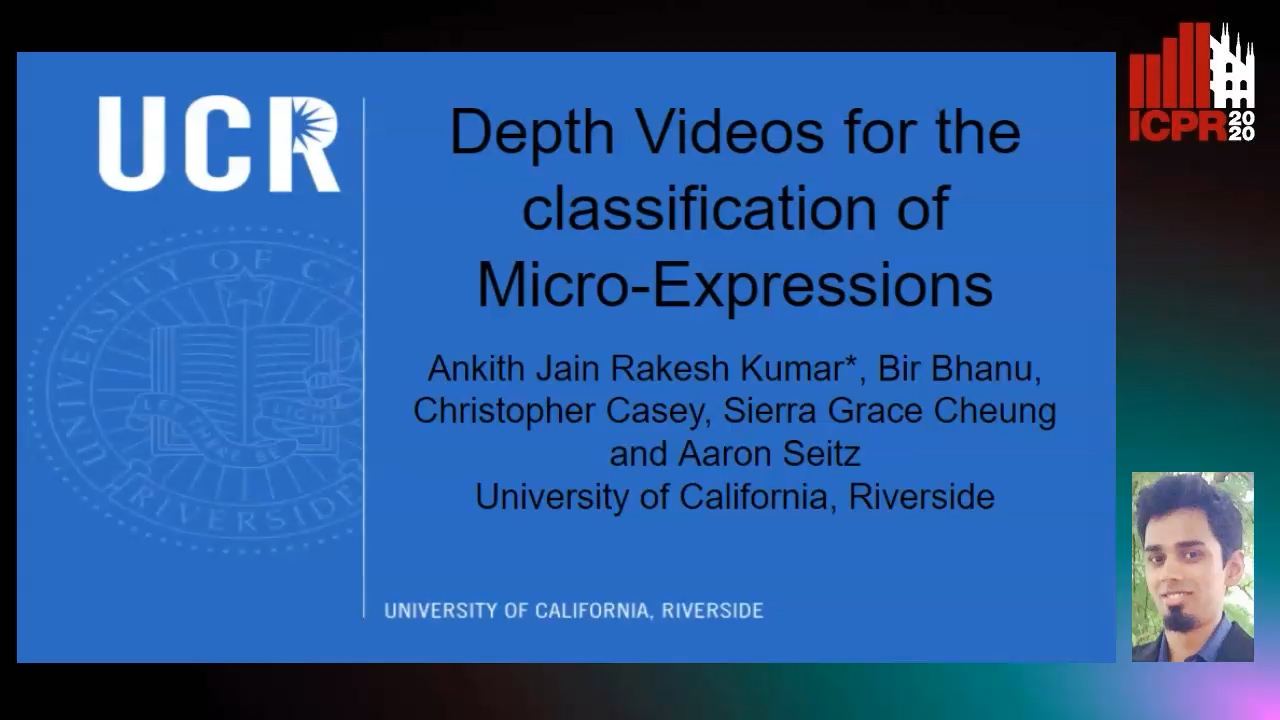
Auto-TLDR; RGB-D Dataset for the Classification of Facial Micro-expressions
Abstract Slides Poster Similar
Hierarchical Multimodal Attention for Deep Video Summarization
Melissa Sanabria, Frederic Precioso, Thomas Menguy

Auto-TLDR; Automatic Summarization of Professional Soccer Matches Using Event-Stream Data and Multi- Instance Learning
Abstract Slides Poster Similar
Attentive Visual Semantic Specialized Network for Video Captioning
Jesus Perez-Martin, Benjamin Bustos, Jorge Pérez

Auto-TLDR; Adaptive Visual Semantic Specialized Network for Video Captioning
Abstract Slides Poster Similar
Feature-Supervised Action Modality Transfer
Fida Mohammad Thoker, Cees Snoek

Auto-TLDR; Cross-Modal Action Recognition and Detection in Non-RGB Video Modalities by Learning from Large-Scale Labeled RGB Data
Abstract Slides Poster Similar
Continuous Sign Language Recognition with Iterative Spatiotemporal Fine-Tuning
Kenessary Koishybay, Medet Mukushev, Anara Sandygulova

Auto-TLDR; A Deep Neural Network for Continuous Sign Language Recognition with Iterative Gloss Recognition
Abstract Slides Poster Similar
Relevance Detection in Cataract Surgery Videos by Spatio-Temporal Action Localization
Negin Ghamsarian, Mario Taschwer, Doris Putzgruber, Stephanie. Sarny, Klaus Schoeffmann

Auto-TLDR; relevance-based retrieval in cataract surgery videos
Global Feature Aggregation for Accident Anticipation
Mishal Fatima, Umar Karim Khan, Chong Min Kyung

Auto-TLDR; Feature Aggregation for Predicting Accidents in Video Sequences
Towards Tackling Multi-Label Imbalances in Remote Sensing Imagery
Dominik Koßmann, Thorsten Wilhelm, Gernot Fink
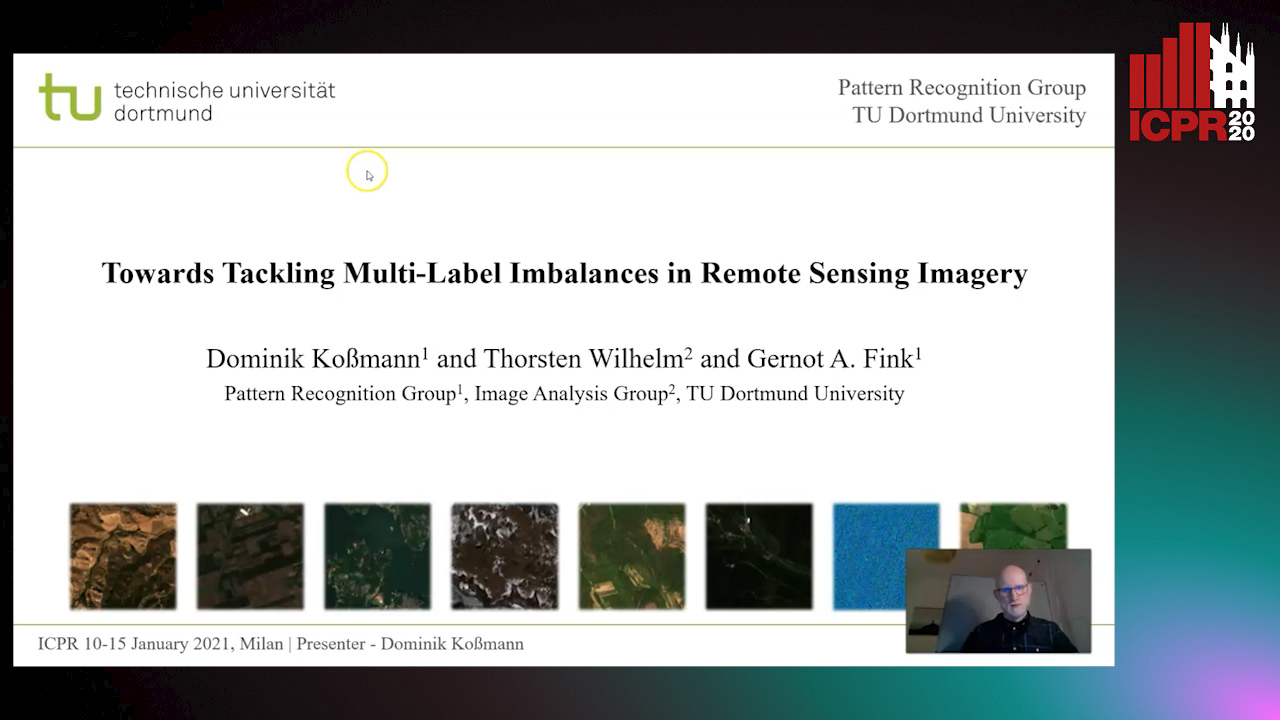
Auto-TLDR; Class imbalance in land cover datasets using attribute encoding schemes
Abstract Slides Poster Similar